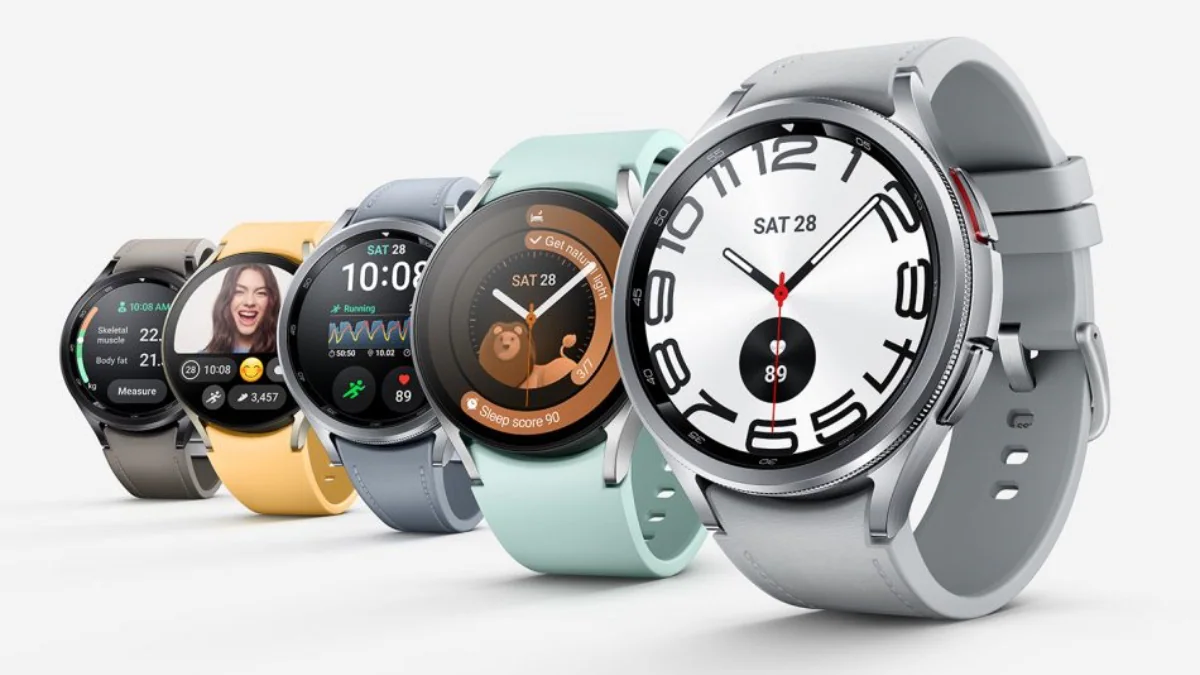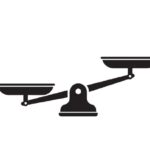Samsung recently unveiled its newest smartwatches – the Galaxy Watch 6 and Watch 6 Classic. I was able to get both models early and have been testing them out.
In this comprehensive review, I’ll unbox these watches, examine all the hardware changes, compare to previous models, highlight new features, and ultimately help you decide if upgrading is worthwhile. Let’s get started!
Unboxing the Galaxy Watch 6 Classic
I’ll begin with the 47mm Galaxy Watch 6 Classic since that’s likely the most popular model. Here’s what comes in the box:
- Galaxy Watch 6 Classic
- Custom silicone band
- Magnetic charging cable
- Quickstart guide
The included band utilizes Samsung’s new One Click system. A button on the strap retracts the spring bars, allowing you to swiftly attach or detach the band. It’s genius and so much better than fiddling with straps and pins.
Now let’s get it powered on and paired so I can start testing.
Unboxing the Galaxy Watch 6
Next up is the standard Galaxy Watch 6 in the smaller 40mm size. The box contains:
- Galaxy Watch 6
- Soft “bio-fiber” fabric band
- Wireless charging dock
- Quickstart guide
This new fabric band aims for breathability during workouts. The texture seems a bit abrasive though – I’ll have to try it for a few days to see if it’s truly comfortable.
With both watches unboxed, let’s examine the hardware changes.
Comparing Size and Design to Older Models
First, the Galaxy Watch 6 Classic vs past models with rotating bezels:
- Gear S3 Frontier: Much sleeker with significantly larger display in nearly the same overall footprint.
- Gear S2: Slimmer bezel but thicker case. Similar sizes when comparing 42mm S2 to 40mm Watch 6 Classic.
- Galaxy Watch: Smoother rotating bezel operation. Screen size increase is dramatic.
- Galaxy Watch 3: Watch 6 Classic’s deeper blacks and high gloss finish stand out.
- Galaxy Watch 4 Classic: Giant leap in display size while retaining same dimensions.
And for the regular Galaxy Watch 6:
- Galaxy Watch 4: Identical form factor but with bigger, sleeker display. Modernized design.
- Galaxy Watch 5: Very comparable sizes. If 44mm Watch 5 felt too big, 40mm Watch 6 could be ideal.
In summary, the screens have enlarged impressively while still retaining comfortable dimensions. The bezels slimmed down even more compared to earlier generations.
How Do the Materials and Buttons Compare?
- Galaxy Watch 6 Classic uses premium stainless steel while the regular Galaxy Watch 6 opts for aluminum.
- The Classic also has a more intricate ridged design versus the 6’s smoother, curved sides.
- Both get an upgrade to scratch-resistant sapphire crystal face covers.
- Physical buttons feel solid with nice clickiness. The Classic’s buttons have a more upscale sheen.
- Rotating bezel on the Classic operates with satisfying smoothness and precision.
Overall, the Galaxy Watch 6 Classic does seem to edge out the regular 6 in terms of luxury materials and refinements. But both feel like high quality smartwatches.
How Big Are the Watches on Your Wrist?
For reference, my wrist size is 6.75″ (17 cm) around. Here is how these models look on me:
- 47mm Galaxy Watch 6 Classic – Fits nicely. Does not look oversized. Lug ends align cleanly with my wrist.
- 40mm Galaxy Watch 6 – Very compact appearance. Screen size is similar to larger Watch 5.
I think Samsung nailed the sizing this year. Even the chunky Classic doesn’t feel excessively big. And the smaller 6 looks crisp.
Comparing the Bands
Here are some quick thoughts on the bands:
Silicone (Watch 6 Classic):
- Soft and flexible as expected
- Sweat and water resistant
- Pins lock securely into holes
- Overall very comfortable
Fabric (Galaxy Watch 6):
- Lightweight and breathable
- Velcro for custom tightness
- Texture is oddly rough – questionable long-term comfort
- My wife loves it, but I’m unsure
I’ll need more testing to give final verdicts, but the fabric band seems dubious for workouts. Silicone is the safer choice.
How Do the Sensors and Features Compare?
If upgrading from the Galaxy Watch 5 or 5 Pro, you get the same health sensors and features. The only change is the temperature sensor position moved slightly.
Versus the Galaxy Watch 4 series, you gain:
- Temperature sensor for menstrual cycle tracking
Compared to the Galaxy Watch 3, additions include:
- Body composition measurements
- Temperature sensor
And if coming from the original Galaxy Watch, you also pick up:
- Blood oxygen monitoring
- Improved sleep tracking
- More advanced health features
Jumping back to older models like the Gear S3 or Gear S2, you get more health sensors plus a parade of smartwatch upgrades.
Bottom line – you get incremental health additions with each generation. But big leaps in smart capabilities if upgrading from early Samsung watches.
Outdoor Visibility and Brightness
The Galaxy Watch 6 series brings a big boost in max brightness, but it only cranks up under direct sunlight:
Indoors (max brightness): Virtually no difference versus Galaxy Watch 5 or 4. Both remain very readable.
Outdoors (max brightness): The Galaxy Watch 6 looks approximately 2x brighter in the sun than the Galaxy Watch 5 or 4. It’s a substantive improvement.
Always-On Display: Outside, the Watch 6’s AOD is significantly more visible. The older watches struggle badly in sunlight.
So brightness when glancing outdoors is meaningfully better on the new models. But not a big change for indoor visibility.
New Hardware Features in Action
Here are some of the cool new hardware tricks Samsung added:
- The infrared LED activates in sleep tracking mode. This allows heart rate monitoring without the distracting green LED glowing in your face overnight.
- Raised wrist speaking lets you initiate calls and voice commands without saying “Hey Bixby” first. Just raise your watch to your mouth and start talking. Feels natural.
- Dual-core Exynos processor keeps everything running smoothly. No noticeable performance gains versus Galaxy Watch 5, but still snappy.
While not revolutionary changes, these additions do improve the overall user experience.
How Do the New Faces Compare to Older Models?
The Galaxy Watch 6 series brings some new watch face options, including:
- Silly Face: Just a bit of fun with different whimsical expressions.
- Sleep Coaching: Monitors sleep and provides daily tips to improve it.
- Perpetual: Cool infinity effect with gradually changing details.
- Stretch Time: Ambient mode movement gives the illusion of a stretching analog watchface.
The other new options are mainly variations on existing designs. Overall, a decent selection of fresh watch faces to choose from.
What Software and UI Changes Are Present?
Let’s examine some of the notable software tweaks:
- New vertical app menu simplifies finding and launching apps. Much cleaner!
- Tiles now scroll vertically and are organized into relevant categories instead of one long horizontal list.
- New Timers and Forecast tiles provide quick access to those tools.
- Battery tile shows remaining power of connected devices. Tapping does nothing though. Odd.
- Redesigned quick settings menu has horizontally scrolling toggles instead of paginated tiles.
- Workout start can be manually controlled instead of auto-starting after countdown. Helpful for getting situated.
Overall, Samsung slimmed down and reorganized parts of the interface without drastically altering core functionality. The changes enhance day-to-day usability.
New Watch Faces and Customizations
Some of the new watch faces include:
Perpetual: Shows infinity symbol, gradual color changes, and ambient starry sky. Highly customizable.
Stretch Time: Analogue watch with pulsing visual effect in ambient mode. Match colors to your style.
Sleep Coaching: Monitors sleep habits and delivers daily morning tips to improve it.
Info Graphic Duo: Creative vertical duo display with steps, heart rate, etc.
Daily Activity: Visualizes daily activity level with numbers encircling the clock.
Plenty of personalization across the new faces via colors, complications, design aspects, and more. Overall, a solid refresh with variety.
How Is the Performance and Speed?
I ran some side-by-side speed tests on the Galaxy Watch 6 versus older models:
Galaxy Watch 5 and Watch 4: Very similar speeds overall. Not noticeably faster in most apps.
Galaxy Watch 3: Galaxy Watch 6 edges it out in most apps, especially intensive ones like Health.
Galaxy Watch and older: Vastly improved performance launching and switching between apps. Smoother animations too.
So if coming from the last couple generations, expect equivalent snappiness. But make the leap from Galaxy Watch 3 or prior for meaningful speed gains.
What Are Some of the Best New Health Features?
My favorite new health tracking features and metrics are:
- Spot AFib detection – Passively monitor for atrial fibrillation and receive alerts if irregular heart rhythms are found. Huge safety feature!
- Sleep Coaching – Review your sleep habits each morning and get personalized tips to improve overnight recovery.
- Walk/Run separately tracked – Enable walking and running workouts independently for more tailored tracking. Previously bundled together.
- Cycling detection – Watch can now automatically recognize cycling activity in addition to running and swimming.
- Track Run customization – Offers incredibly detailed options for optimizing track workouts. Splits, lap alerts, pacing, recovery, and more.
Samsung persists in surfacing new ways to monitor overall wellness. The Galaxy Watch 6 has you covered from workout to rest.
How Does the Battery Life Compare?
I’m still conducting battery tests, but Samsung claims similar life to the Galaxy Watch 4:
- Galaxy Watch 4 40mm lasted 30 hours with AOD on in my testing.
- Estimating the Galaxy Watch 6 40mm will land around 30 hours as well based on Samsung’s guidance.
The Galaxy Watch 5 Pro has the largest battery by far at 80+ hours due to its bigger size and titanium frame.
Check back for my final ratings after using both models extensively. I’ll update once I have the full picture.
What Features Are Missing Compared to Old Models?
The main capabilities you lose migrating from the Galaxy Watch 5 Pro or older models are:
- Multiday battery life – The Watch 5 Pro can last 3-4 days easily. The Watch 6 models will be under 2 days.
- Trackback – Allows retracing your route during outdoor workouts if lost (Watch 5 Pro and older).
- GPX route uploading – Import advanced hiking/biking GPX routes to follow (Watch 5 Pro only).
Losing these specialty features makes sense given the Pro is meant for hardcore athletes versus the more mainstream Galaxy Watch 6.
Closing Recommendations
So should you upgrade to the Samsung Galaxy Watch 6 or Watch 6 Classic? Here is my advice:
From Galaxy Watch 5 – Worth it for the brighter display, sleeker size, and new health metrics.
From Galaxy Watch 4 – Same as above, plus the temperature sensor. Solid improvements.
From Galaxy Watch 3 or older – Absolutely upgrade. You get major gains in every area – display, speed, health tracking, design, etc.
From Galaxy Watch 5 Pro – Only if display and style trump advanced routing and longer battery.
Overall, the Galaxy Watch 6 series brings meaningful enhancements like the brighter screen and wellness features while retaining everything most people want in a smartwatch. For most owners of older Samsung watches, it’s a terrific upgrade!
Let me know if you have any other questions about the new Galaxy Watch models. I’m happy to provide buying advice and compare additional factors. Enjoy picking out your new Samsung watch!
















